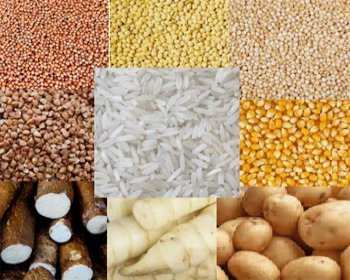Celiac disease is an autoimmune disorder where eating gluten-rich foods items like wheat, damages the small intestine. It can cause digestive problems and prevent the body from absorbing nutrients properly.
Gluten is a protein found in wheat, barley, and rye. Celiac disease individuals need to avoid gluten completely to protect their gut (intestines) and prevent serious health problems.

Fortunately, there are many gluten-free grains and grain-like options, as well as fruits, vegetables, legumes, nuts, seeds, and dairy that one can enjoy safely.
-
Pseudocereals like buckwheat, quinoa, and amaranth.
-
Cerelas like Rice, ragi, sorghum, foxtail millet, maize, etc.
-
Starch-rich roots: Tapioca, Arrowroot.
Pseudocereals:
Buckwheat, quinoa, and amaranth are gluten-free seeds that can be safely eaten by people with celiac disease. They are highly nutritious and often used as alternatives to traditional grains.
Buckwheat, despite its name, it is not related to wheat and does not contain gluten. Buckwheat is actually a seed from a broadleaf plant related to rhubarb, and it is rich in protein, fiber, and antioxidants. It is also low on the glycemic index, which means it helps keep blood sugar levels stable.
Amaranth is another excellent choice for people with celiac disease. It is a tiny seed that is high in protein, calcium, and iron.
Quinoa is a gluten-free pseudocereal that is safe and nutritious for people with celiac disease. It is considered a complete protein because it contains all nine essential amino acids. In addition to protein, it provides fiber and essential minerals, making it an excellent alternative to gluten-containing grains.
Cereals
Rice is one of the most common gluten-free grains and can be eaten in many forms, including white, brown, black, or wild rice.
Sorghum is a versatile grain that can be ground into flour, popped like popcorn, or used in porridge. It is high in fiber and antioxidants.
Foxtail and finger (ragi) millets are a gluten-free grain that can be safely eaten by people with celiac disease. It is rich in fiber, protein, and minerals, supporting a healthy and varied diet.
Roots and tubers
Tapioca, which comes from the cassava root, is often used in gluten-free baking and as a thickener in soups and sauces.
Arrowroot, another root-based starch, is gentle on the digestive system and also works well as a thickener.
Additionally. people with celiac disease can safely enjoy fruits, vegetables, legumes, nuts, seeds, and dairy, as they are naturally gluten-free. These foods provide essential vitamins, minerals, and fiber for a balanced, healthy diet.
These optional grains and seeds provide many important vitamins and minerals that might be lacking in a gluten-free diet. They also add variety, flavor, and texture to meals, helping people with celiac disease enjoy a diverse and satisfying diet. Choosing naturally gluten-free grains is a safe and healthy way to replace traditional wheat-based products.

